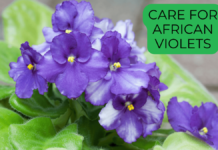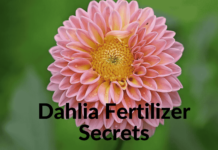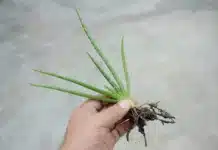The Money Tree plant, also known as Pachira aquatica, is an exquisite indoor plant that has become a popular choice for adding a tropical touch to homes and offices. Its unique braided trunk and glossy green leaves give it a palm-like appearance, making it a visually striking addition to any space. Native to Central and South America, the Money Tree is also widely recognized in East Asian cultures, particularly in Taiwan, where it is believed to bring good luck and positive energy according to Feng Shui principles.
In this guide, we’ll walk you through everything you need to know about money tree plant how to care, from watering and sunlight needs to pruning and propagation. Whether you’re a seasoned plant enthusiast or a beginner, this easy-to-follow guide will help your Money Tree thrive.
1. Introduction to the Money Tree
The Money Tree is more than just a houseplant—it’s a symbol of good fortune, positive energy, and prosperity. Whether you’re interested in its Feng Shui benefits or its ability to add greenery to your home, the Money Tree is sure to bring charm and vibrance to any room. With its fast growth rate (up to 24 inches a year) and easy-to-care-for nature, it’s an excellent choice for both beginner gardeners and experienced plant lovers alike.
As the plant matures, it can reach impressive heights of 6 to 8 feet. It’s a forgiving plant that thrives with minimal care, as long as you meet its basic requirements. Now, let’s dive into the specifics of money tree plant how to care and ensure it remains healthy and happy.
2. Why Should You Care for a Money Tree?
Taking care of your Money Tree plant isn’t just about having a pretty plant in your home. It’s about providing the right conditions for it to flourish and bring positive energy into your life. Many people believe that having a Money Tree in their home can help attract wealth and success, as it’s often seen as a symbol of good fortune. Additionally, this plant is known for its stress-relieving qualities, making it a great addition to any room where relaxation and calmness are essential.
Health Benefits:
- Stress Reduction: Spending time with plants, including Money Trees, has been linked to lowered stress levels.
- Air Purification: Like many indoor plants, the Money Tree helps purify the air by absorbing carbon dioxide and releasing oxygen.
3. Essential Money Tree Care Tips
Proper care is essential to keeping your Money Tree healthy. Here are the main care requirements for this resilient plant:
Light Requirements
Money Trees thrive in bright, indirect sunlight. This helps the plant grow strong and healthy. However, too much direct sunlight can scorch the leaves and cause them to turn yellow or brown. Place your Money Tree near a window with filtered light or use grow lights if natural sunlight is insufficient.
If you have limited light, the Money Tree can tolerate medium light, but its growth may slow down.
Soil Preferences
A Money Tree needs a well-draining potting mix. The ideal mix should be peat-moss-based or a cactus soil mix to provide excellent drainage. This helps avoid the risk of root rot, a common problem when the roots are left sitting in water. You can also add perlite to the mix to further improve drainage.
Watering Guidelines
Watering is one of the most crucial aspects of caring for your Money Tree. These plants prefer to be kept evenly moist, but not soggy. You should water when the top inch of the soil feels dry to the touch. During the growing season (spring and summer), you’ll need to water more frequently. In the fall and winter, reduce watering to avoid overwatering.
Always ensure that the pot has drainage holes to prevent water from collecting at the bottom.
Temperature and Humidity
Money Trees thrive in temperatures between 65°F and 75°F (18°C to 24°C). They should be kept away from drafts, hot air vents, and cold windows. In terms of humidity, Money Trees appreciate moisture but can tolerate average household humidity levels. If the air in your home is very dry, you can increase humidity by placing your plant on a pebble tray with water or using a room humidifier.
Fertilization Needs
To encourage strong growth, fertilize your Money Tree once a month during the growing season in spring and summer. A balanced, general-purpose liquid fertilizer diluted to half strength works well. Avoid fertilizing in the fall and winter, as the plant’s growth slows during these months.
4. How to Braid a Money Tree
The braided trunk of the Money Tree is one of its most distinguishing features. Here’s how you can create a beautiful braided trunk:
- Select Healthy Stems: Choose young, flexible stems that are at least 12 inches long.
- Loosely Braid the Stems: Carefully braid the stems together without pulling too tightly, as this could harm the plant.
- Tie the End: Use a twist tie or string to secure the braid.
- Repot the Tree: After braiding, repot the Money Tree and stabilize it with a stake if needed.
- Let It Recover: Place the braided plant in a partially shaded area for a month to help it recover from the stress of braiding.
5. How to Propagate Your Money Tree
Propagating a Money Tree is simple and can be done through stem cuttings. Here’s how:
- Choose a Healthy Stem: Take a cutting that’s at least 4 inches long, making sure it has a couple of nodes.
- Place in Water: Put the cutting in a jar of water, ensuring that the nodes are submerged.
- Wait for Roots to Form: After a few weeks, the cutting will begin to root.
- Pot the Cutting: Once the cutting has established roots, pot it in a well-draining soil mix.
6. Potting and Repotting Your Money Tree
Money Trees need space to grow, so they should be repotted every couple of years. When repotting, use a pot that’s one size larger than the current one, and ensure it has adequate drainage. If you want to keep your plant small, you can avoid repotting it too frequently.
7. Common Pests and DiseasesWhile Money Trees are generally resilient, they can be prone to a few pests:
- Mealybugs: These pests can be controlled with insecticidal soap or neem oil.
- Scale: These pests attach themselves to the plant’s stem and leaves. Treat them with horticultural oil.
8. Troubleshooting Common Problems
Problem: Yellow or Brown Leaves
Cause: This can be a sign of overwatering or underwatering. Check the soil moisture and adjust watering as needed.
Problem: Leggy Plant
Cause: Insufficient light can lead to a leggy appearance. Move your plant to a brighter spot.
Problem: Soft, Mushy Stems
Cause: Overwatering can cause the stems to become mushy. Ensure your plant has proper drainage and reduce watering frequency.
9. Money Tree FAQs
How long do Money Trees live?
With proper care, a Money Tree can live for a decade or more.
Does the Money Tree flower?
Money Trees only flower when grown outdoors in their native environment. Indoors, they do not bloom, as they require pollination by bats.
Can I put my Money Tree outside?
Yes, you can move your Money Tree outdoors during the summer, but ensure nighttime temperatures don’t fall below 50°F. Gradually acclimate the plant to outdoor conditions.
10. Conclusion
Caring for a Money Tree is relatively simple, and with the right attention to its light, soil, and watering needs, it can grow into a thriving, long-lasting plant. Not only does it enhance the beauty of your indoor space, but it’s also believed to bring positive energy and good fortune. By following the tips outlined in this guide, you can enjoy the benefits of this gorgeous plant for years to come.
Pros and Cons of Money Tree Care
| Pros | Cons |
|---|---|
| Easy to care for, perfect for beginners | Susceptible to root rot if overwatered |
| Attractive, with a unique braided trunk | Can grow tall and may need repotting |
| Believed to bring good luck and positive energy | Can attract pests like mealybugs and scale |
| Tolerates medium light and dry air | Needs proper humidity in dry environments |
| Helps reduce stress and purifies the air | Can become leggy if not given enough light |
By following these simple care tips and addressing any common issues that arise, you’ll be well on your way
to ensuring your Money Tree thrives in your home. Happy gardening!























